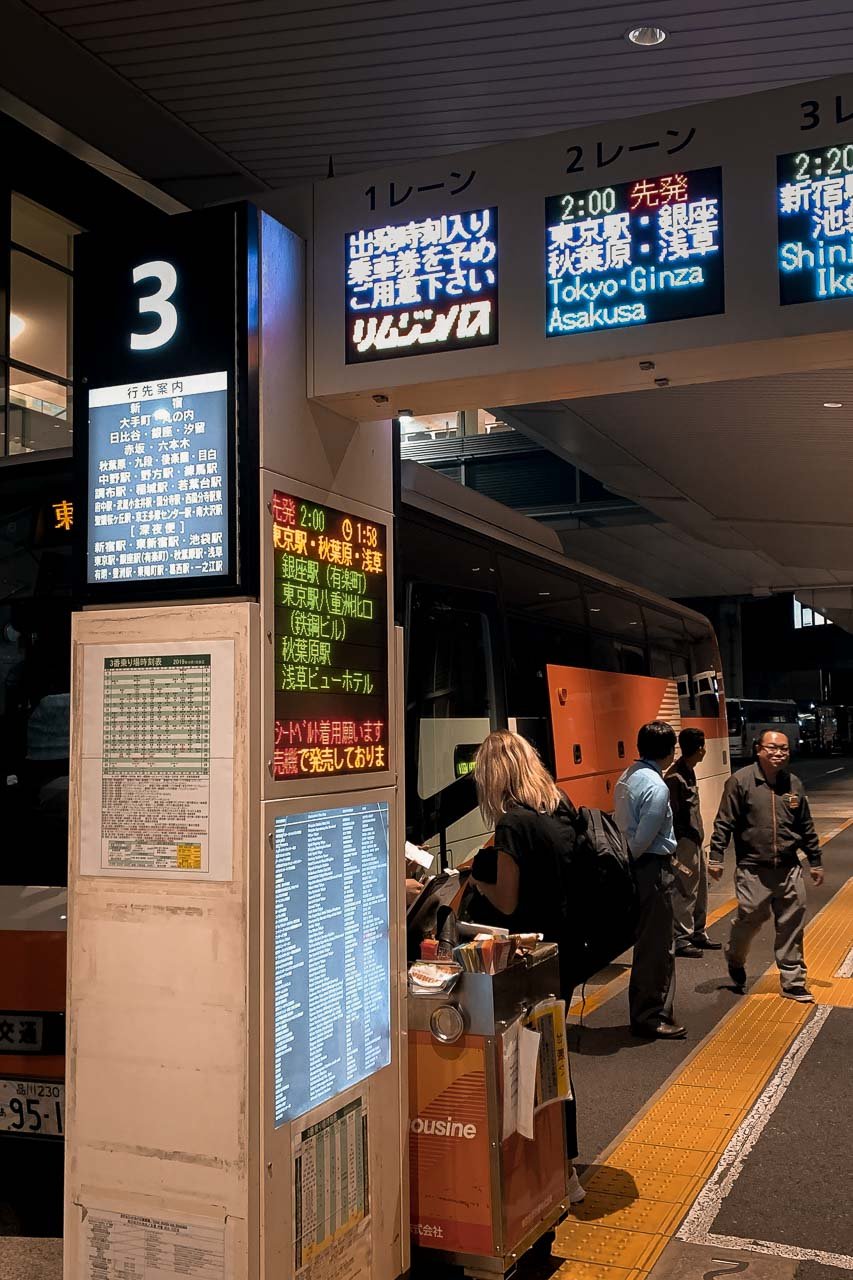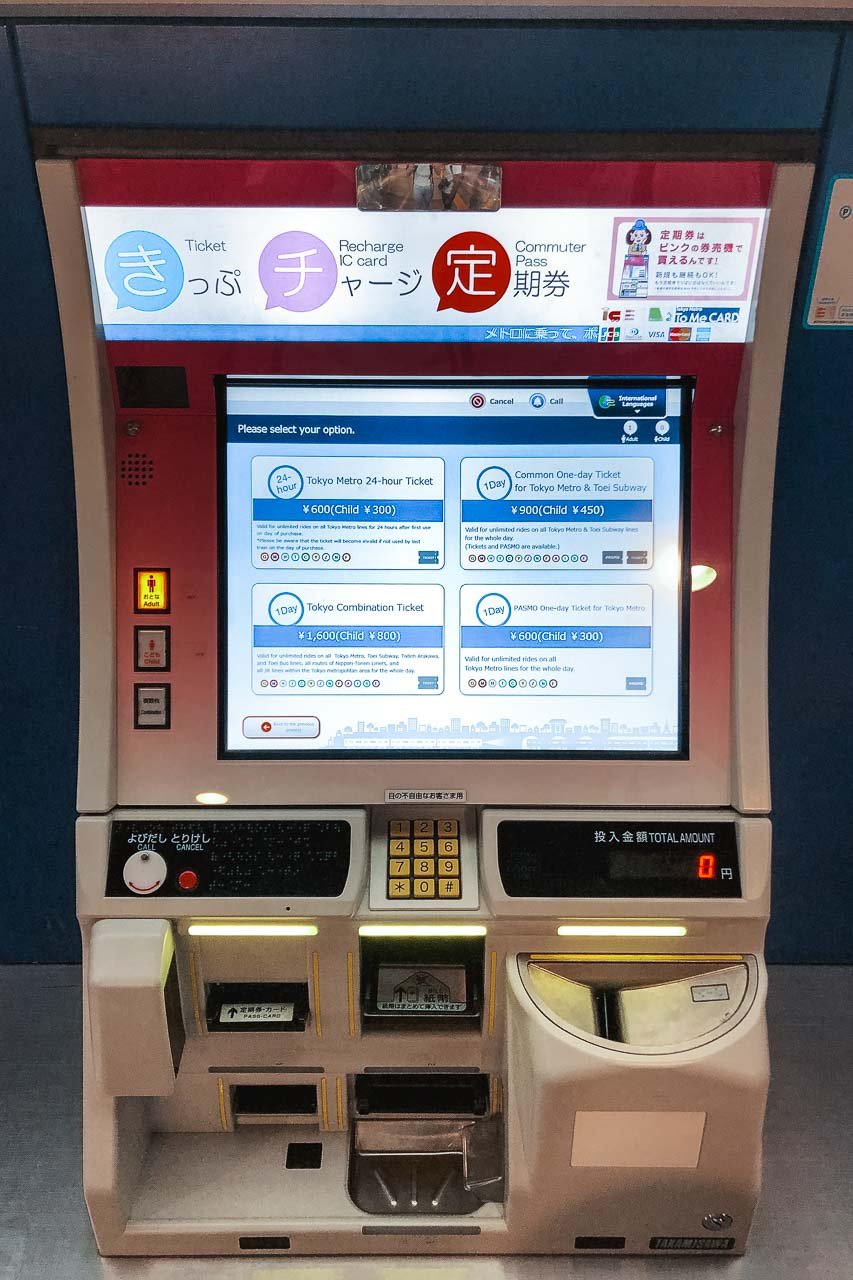Figuring out how to get around Tokyo can be overwhelming and stressful as there are so many options to choose from. In this article, we share our best tips for transport in Tokyo to help you to plan your trip without any worries. From taking the train from the airport to the city center to money-saving tips while using the metro/subway, all the best tips are listed below.
Read also: Tokyo in 5 days: the ultimate travel guide + tips
How to get to Tokyo?
By plane:
Tokyo has two major international airports, Tokyo Narita and Tokyo Haneda. We flew from Kuala Lumpur with Singapore Airlines to Tokyo Haneda Airport and loved how quick and easy everything went upon arrival. Tokyo Haneda Airport (HND) is the closest to the city center, only a 30-minute drive while Tokyo Narita Airport (NRT) is located 1-hour from the city but the most popular airport for international and direct flights from all around the world.
Search for the best flights to Tokyo here
By train:
If you start your trip through Japan somewhere else like Kyoto or Osaka, the easiest way to go to Tokyo is by train. Taking the train is the most popular way of getting around in Japan. It’s super easy, well-organized, and very comfortable. If you buy the Japan Rail Pass, you can take trains in all directions and certain Shinkansen (high-speed bullet train) which takes you wherever you want to go in no time.
Get your Japan Rail Pass here
By bus:
What many people don’t know and what we personally used most during our trip through Japan is the bus. Taking the bus is a less expensive alternative than taking the train but it takes more time. For example, the Shinkansen from Osaka to Tokyo is only 2 hours and by bus, it’s around 8-9 hours. So it’s up to you to decide what’s most comfortable. We had the time so we did almost everything by bus and can only recommend this. Super easy and comfortable! (even with WiFi onboard)
Check prices and schedules for buses here
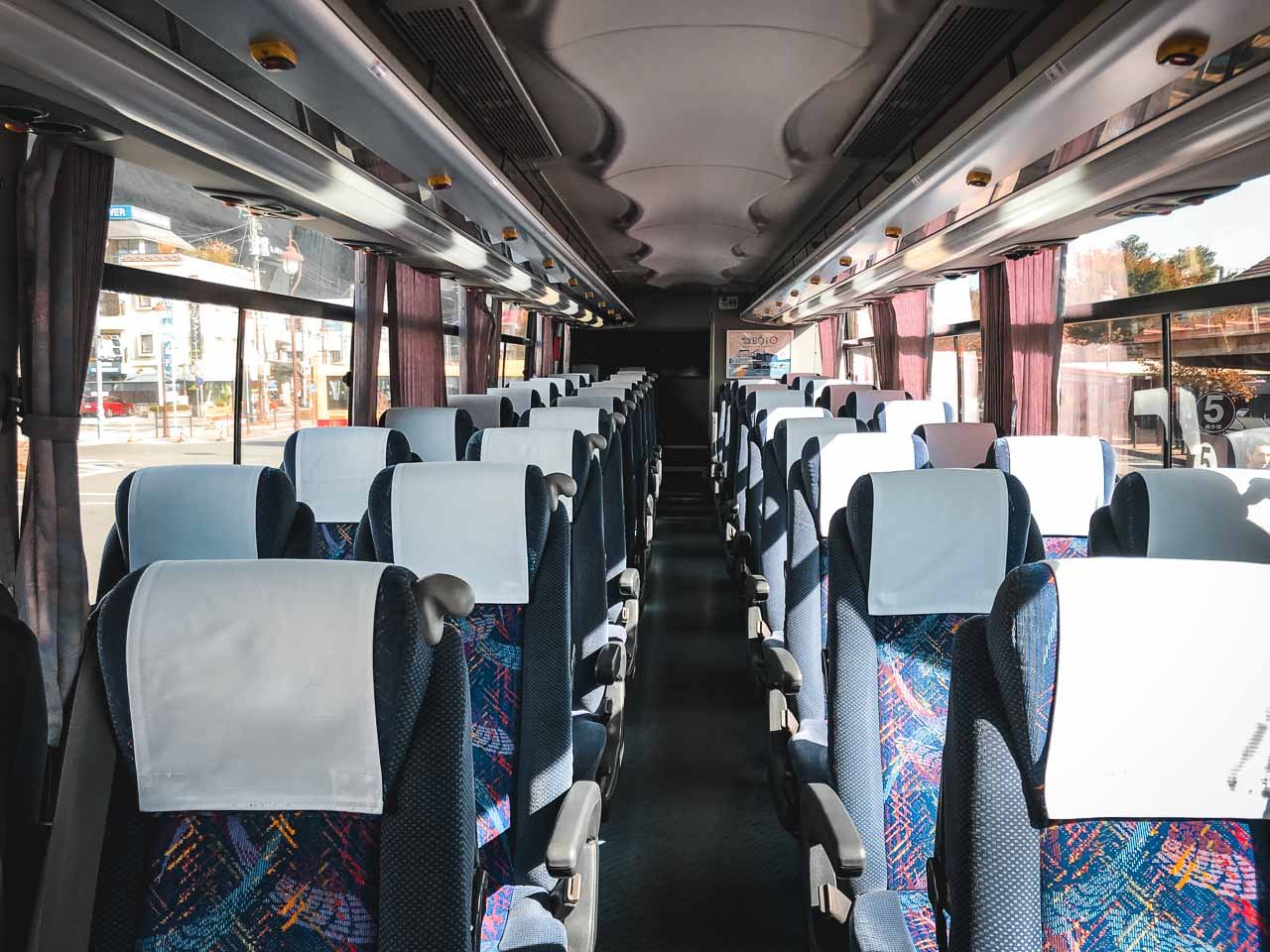
Getting to the city center from Tokyo airport
Depending on which airport you arrive (Haneda or Narita), there are a lot of different options for getting to the city center of Tokyo. You can either go by train, bus or taxi. We made an overview of all possible transportation to get to Tokyo city center from the two different airports including prices and links to buy tickets in advance below.
From Tokyo Haneda Airport to the city center
(based on going to Tokyo station)
- The easiest and also very fast option is to take the Tokyo Monorail to Hamamatsucho station (20 minutes, JPY 500 or $4,7) + then transfer to a JR train to Tokyo Station (5 minutes, JPY 160 or $1,5). The Monorail is covered by the Japan Rail Pass and so free to use if you can exchange and buy the JR Pass in advance. Trains are running every 3-5 minutes.
- The cheapest option is to take the Keikyu Airport Line to Shinagawa Station (20 minutes, JPY 300 or $2,8) + then transfer to a JR train to Tokyo station (10 minutes, JPY 170 or $1,6).
- Another option is by Express/Limousine bus which has connections to a lot of places in Tokyo and stops at most major Tokyo hotels. The journey takes 30 minutes to Tokyo Station and costs around JPY 950 ($9) per person.
- TIP: If you arrive late at night or early in the morning (like we had) then you better take the Express/Limousine Bus which has its first arrival around 4:30 and last departure around 2:00. We paid JPY 1800 ($16) per person and had a very comfortable ride. Ticket for the Express/Limousine buses can be bought at the airport at the ticket counter right when you exit the baggage hall.
Find more information and schedules of the Express/Limousine bus here
- If you love to have more privacy and comfort you can also go by taxi. It’s the most expensive option but very fast and you can also take them during the night. Prices are around JPY 7000 ($65) with a surcharge of 20% between 22:00 and 5:00.
From Tokyo Narita Airport to the city center
(based on going to Tokyo station)
- The most comfortable and fastest option is to take the JR Narita Express train which is a direct line and free when you have the Japan Rail Pass. The journey takes around 53 minutes and departs every 30 to 60 minutes. If you don’t have the JR Pass, a ticket will cost around JPY 3000 ($28) per person.
- A cheaper option is to take the direct JR Sobu Line which takes around 1,5 hours to get to Tokyo Station. A one-way trip cost around JPY 1340 ($12).
- You can also travel by bus from Narita Airport to Tokyo Station. There are two options: the more expensive but comfortable one (incl. WiFi) is the Limousine bus which costs JPY 2800 ($26) and takes you to Tokyo Station in 1 hour 40 minutes. The other one is brand new since February 2020 and is the Airport Bus TYO-NRT which costs only JPY 1000 ($9) during the day and JPY 2000 ($18) for late-night and early-morning departures.
Find more information about the Airport bus TYO-NRT and its schedules here.
- If you love to have more privacy and comfort you can also go by taxi. As Narita Airport is located about 70 km outside Tokyo, rides are super expensive. You can count around JPY 30,000 ($280) per car and the trip will take around 45 minutes.

How to get around Tokyo
The best way to get around Tokyo is by train and subway. There are not only hundreds of different routes you can take, but it’s also the quickest and easiest way to hop from one place to another. To use the train network or subway system, we highly recommend you to buy as quickly as possible a prepaid transportation card which will save you a lot of time and money. There are two different types of prepaid transportation cards: Suica and Pasmo. Which card is the best to use? We listed the differences below.
Read also: Best hotels & hostels in Japan
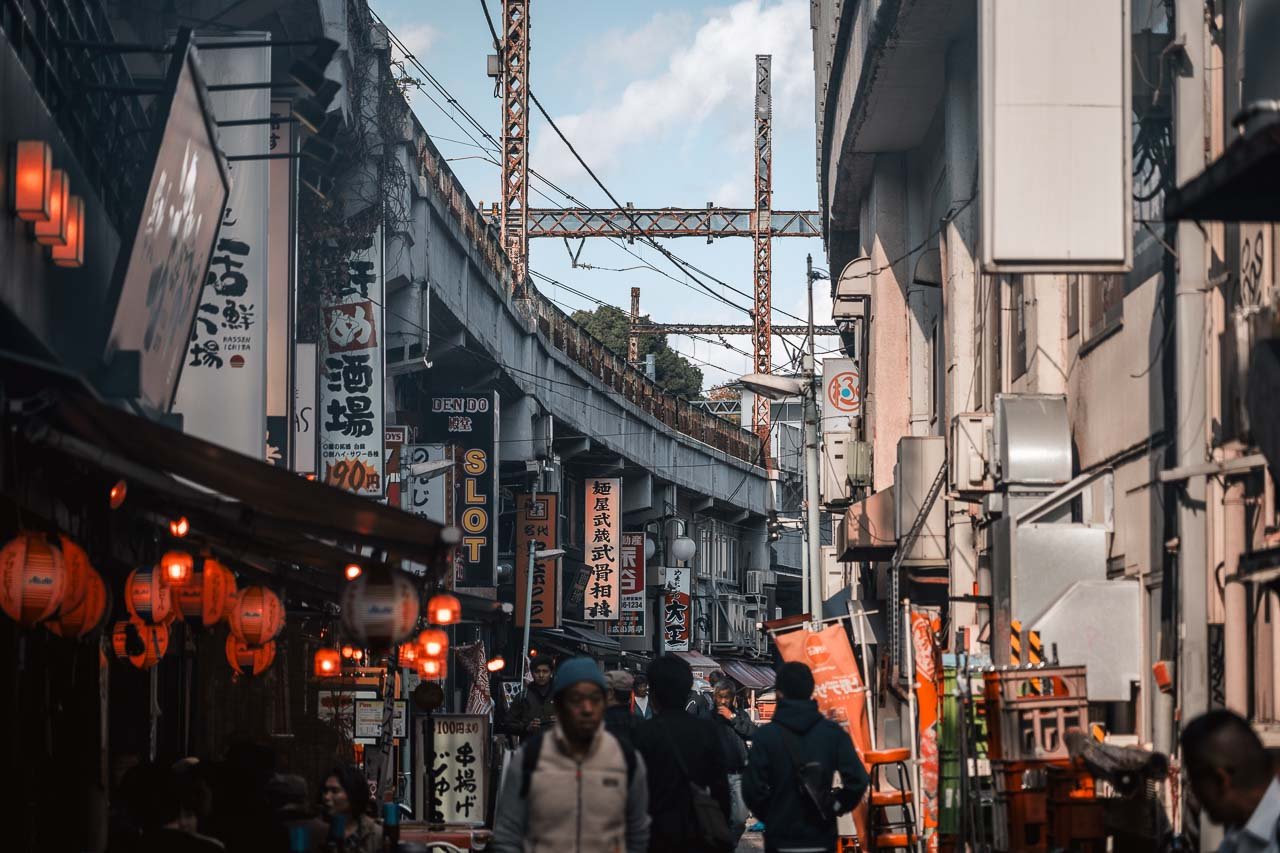
Suica card and Pasmo card: the difference
As you could read above, the best way to get around Tokyo is by train or subway. And the quickest and easiest way to pay for both types of transport is to get a Suica card or a Pasmo card. You’re not only saving time and money but also if you change your mind you can hop off wherever you want without worrying about having the right ticket.
As we had struggles with finding clear information online about which one we should take, we asked an employee in Tokyo Station to help us out.
- Let’s start by saying that both cards are basically the same thing, the only difference between a Suica card or a Pasmo card is where you buy them. You can only get a Suica Card in one of the JR stations and a Pasmo card in all other subway stations.
- Both cards are interchangeable which means you can either ride JR trains or private lines with both cards. So the choice is yours!
- Getting a Suica or Pasmo card is very easy. You can get the Suica in advance here or simply buy one of them at the airport or from the ticket vending machines in the stations.
- The cost of both cards depends on how much money you want to put on. We took a Pasmo worth JPY 2000, which was enough for 2-3 days.
- Either Suica or Pasmo is ready to use right after you buy it. And if you run out of money on the card, simply top up at the station where you get off.
- Last but not least, both Suica or Pasmo can be used outside Tokyo and in different regions in Japan as well. So be sure to keep it while traveling to Kyoto, Osaka, or Mount Fuji.
- When you leave Japan you can choose to refund the remaining money on your card or keep it as a souvenir/give it to somebody else. The money on the card doesn’t expire for ten years, so you can use it again if you plan on returning. Amazing right!?
Money-saving tip: get the one-day Tokyo Metro Pass
While you’re saving money when buying a Suica card or Pasmo card, there’s another great money-saving tip for using the subway or metro in Tokyo: get the one-day Tokyo Metro Pass! The two best one-day passes are the Tokyo Metro 24-hour Ticket and the one-day Tokyo Metro + Toei Subway Pass. As we used both of them, we’re explaining the differences below.
Tokyo Metro 24-hour Ticket:
- The Tokyo Metro 24-hour Ticket allows unlimited rides on all Tokyo Metro lines for 24 hours from the moment you buy it. Tickets can be bought in advance or on the day itself. Most recommended if you plan on visiting stations like Asakusa, Shibuya, Shinjuku, Ikebukuro, Tokyo, Roppongi, Omotesando, and Akihabara. With the Tokyo Metro 24-hour pass, you can travel around half of Tokyo’s major areas!
One-day Tokyo Metro and Toei Subway Pass:
- The one-day Tokyo Metro and Toei Subway Pass allow unlimited rides on all Tokyo Metro and Toei Subway lines for 24 hours from the moment you buy it. Tickets can be bought in advance via this website or on the day itself. As there are two subway systems in Tokyo, this pass is most recommended if you plan on visiting all the highlights and different areas in Tokyo!
Read also: Tokyo in 5 days: the ultimate travel guide + tips
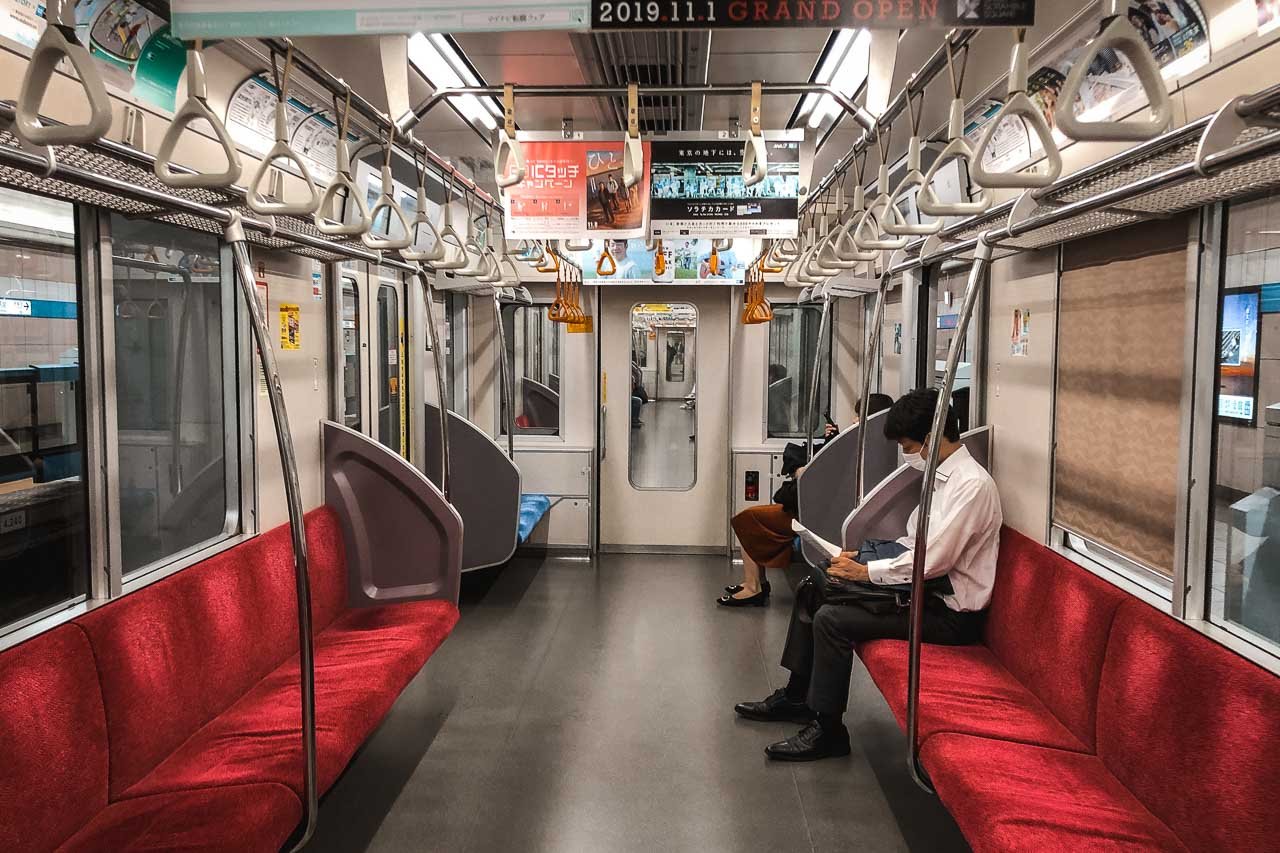

Japan Rail Pass
If you continue your trip after Tokyo to other places in Japan, getting a JR Rail Pass might be super interesting. The JR Rail Pass is the queen of all the travel passes in Japan. It’s best described as a multi-use all-you-can-ride discounted rail ticket which can save you a LOT of money!
When you buy a Japan Rail Pass, you’ll have unlimited train access for 7, 14, or 21 days depending on how long you stay in Japan. Another big advantage of the Japan Rail Pass is that you can also use a lot of high-speed (bullet) trains such as the famous Shinkansen which connects Tokyo with other big cities like Kyoto or Osaka in only a few hours. A huge time-saver!
Especially when you want to see as much as possible in a short amount of time, we highly recommend buying a JR Rail pass in advance. You can get the Japan Rail Pass via this website and have it delivered by post or easily picked up from selected destinations near you!
Get your Japan Rail Pass here

Resources we’ve used to find out how to get around Tokyo
- Skyscanner to book the best flight deals
- Booking.com to book the best accommodations
- Lonely Planet to find the best tips in their complete travel guides
- Tourradar to find the best adventurous group tours
- GetYourGuide to find local guides and organized tours
- HostelWorld to find the best hostels
- Tripadvisor to read the best reviews and ratings
